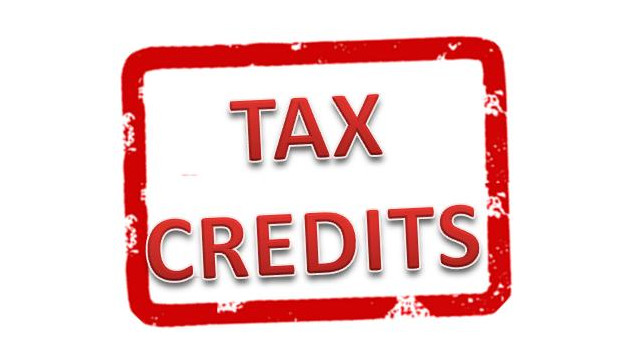Taxes
What to Know about Tax Savings in the Inflation Reduction Act
Many home and small business owners are looking for energy resilience and security in the face of increasing power outages and skyrocketing energy bills.
Dec. 13, 2023

By Clement Feng.
Like many other large legislative bills, the Inflation Reduction Act is filled with lots of taxpayer goodies that are hard to find unless you know where they are. Yet, in this case, identifying them is worth the time and effort since they can make a big difference in tax filings for eligible homeowners and business property owners. In fact, this particular legislation may help many more of your clients than CPAs realized when it was first passed in August 2022.
That is because it is focused on lowering energy usage and costs by incentivizing consumers to buy energy-efficient electric appliances, clean vehicles, rooftop-solar and home energy storage systems.

Thanks for reading CPA Practice Advisor!
Subscribe for free to get personalized daily content, newsletters, continuing education, podcasts, whitepapers and more...
Already registered? Login
Need more information? Read the FAQ's
The timing of the IRA legislation is particularly powerful because nationwide our energy infrastructure is aging, fragile and oftentimes overloaded. Many home and small business owners are looking for energy resilience and security in the face of increasing power outages and skyrocketing energy bills.
CPAs, tax professionals and finance and accounting teams need to take stock of all that is in the legislation because it may make a significant difference in tax savings for clients if they are eligible homeowners and businesses. Not only does the IRA provide property owners with energy cost savings but it makes it simpler and less costly to incorporate clean energy and energy storage platforms through tax credits and other financial incentives. The components of the IRA include:
–an income tax credit of 30% on items installed from 2022 through 2032 to improve energy efficiency and affordability with clean energy equipment like heat pumps, rooftop solar, electric HVAC and water heaters.
–home energy rebate programs of $9 billion focused on low-income consumers to electrify home appliances and for energy efficient retrofits. A few examples include replacing a concrete facade with triple-glazing, installing an intelligent heating and cooling system and LED lighting.
–consumer tax credit for lower/middle income individuals of $4,000 to buy used clean vehicles and up to $7,500 tax credit to buy new clean vehicles. Income eligibility and vehicle models vary based on specific criteria.
–to make affordable housing more energy efficient, there is a $1 billion grant program.
Keep in mind, many of these IRA benefits also apply to small businesses who own stand-alone properties. After your CPA teams explore the requirements to see who is eligible, clients may benefit from tax credits that cover 30% of the cost of switching over to solar power, as well as a tax credit up to $5 per square foot to support energy efficiency improvements that deliver lower utility bills. Additionally, there is a large vehicle tax credit for small businesses that use trucks and vans, covering 30% of purchase costs for clean commercial vehicles, like electric and fuel cell models.
Just as important, the IRA legislation includes the extension of existing tax credits related to solar energy and battery storage. One example is that solar tax credits are now available to cover up to 30% of the installation costs and the federal tax credit can be paired with additional incentives available in many states. It’s estimated this will help the average family save $300 per year or $9,000 over the life of the system.
As the general understanding of the IRA benefits become more widely known, coupled with continued frustrations over high energy costs and power outages caused by grid issues, we can expect increased interest in these energy solutions. That means client questions for your accounting teams so it’s essential to know the legislative “ins and outs” to advise them properly. For example, there is a 30% tax credit for installing battery storage technology that is applicable regardless of charging source. And stand-alone energy storage systems are now eligible if they provide at least 3kWh of capacity. This is important because previously, energy storage projects were only eligible for tax credits if they were connected directly to solar power projects – the IRA removed this requirement. Knowing what has changed and what has been newly added is vital to guiding clients.
Additionally, batteries connected to a solar project will continue to qualify for the credit, even if they can be recharged with other power sources. This means homeowners can tap into the stored energy for backup power in case of a power outage or brownout or for time-of-use (TOU) cost savings, peak shaving, net energy metering (NEM) or off-grid living. Battery storage systems have the added benefits of silent operation, they don’t require fuel and can be installed where there is limited space.
Of course, these are all benefits from the federal legislation but, depending on the state, municipality or what utility company is involved, your clients may be able to save even more money by combining a variety of incentives. It’s important to know what they are and which clients are eligible when they install or enhance their homes or business with clean energy products. The time is now!
====
Clement Feng is VP of Product Management for Briggs & Stratton Energy Solutions, which has a portfolio that includes home standby generators and energy storage systems that can help deliver peace of mind, along with energy resiliency and efficiency, to homeowners and businesses.